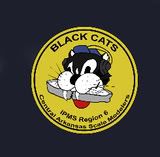Tamiya’s release of a 1/35 scale kit of the steel-wheeled version of the famous “Tiger” tank filled a great void in the area of WWII military kits. This kit is light years ahead of Tamiya’s old Tiger I kit, which featured an earlier model of the same vehicle. This late-model Tiger kit is so good, in fact, that just opening the box and looking at the unassembled kit is enough to bring tears to the eyes of even the most jaded armor builder.
As excellent as this kit is, however, there is room for improvement. For this particular armor builder, that is a good thing, because who wants to assemble a kit that leaves no opportunity for doing the what we love to do most, i.e., take what the manufacturer gives us and “make it better?” This kit allows one to build either a “late” or a “final” version of the Tiger I. the only difference in the two is to be found in the smaller muzzle brake of the “final” version, different loader’s hatches, and some other minor detail variations in the turrets.
Proceeding from the top down, the turret needs some minor work to make up for the kit’s deficiencies. First of all, it should be said that the partial interior provided for the turret (gun breech, commander and loader’s seats) is a mere approximation of the real thing. See any of the many fine reference works on the Tiger for what this area should look like. The “late” version of the kit provides for a binocular gunner’s sight, made by opening a thinned spot in the gun mantlet from the inside to add to the single opening provided for the “final” version. Once this is done, both the gunner’s sight and the opening for the coaxial machine gun should be blanked off from the inside with sheet plastic.
In order to complete the loader’s periscope, a thick piece of sheet styrene should be cut to the correct width and inserted (from the inside) into the opening covered by the periscope guard. This will recreate the periscope glass. Next, the loader’s hatch requires some latch detail. This is a bit of a challenge, requiring some delicate work. All other areas of the kit have some pretty good weld seam detail, but the joint of the turret’s roof with the side plate must have this added to it. The final bit of the work the turret needs is the addition of the lower supports for the spare track links on the turret sides. This is where the spares box came to the rescue for yours truly. There just happened to be some parts from other Tiger kits that can be adapted for this purpose.
The hull and suspension is where this kit really shines. The shape of the hull, finally, is correct, and the sponsons are closed in. there are individual torsion bar arms, which looks really nice, and the correct number of road wheels is provided. The hull machine gun comes complete with an opening for the gun sight. The interiors of the driver’s and radioman’s hatches are well detailed. The exhausts are finely detailed as well, although they do require the addition of pop caps made from kit knock-out tabs. Further detailing required on the hull includes the addition of screens and the frames for them on the engine deck, blanking off the openings of the driver’s visor from the inside, addition of an electrical lead from the headlamp, and some badly needed attention for the tow cables.
The tow cables are the only part of the kit that can really be described as poorly done. These parts are stiff and the brackets that should secure the rear portion of them to the engine deck are not included. The best solution to this problem is to cut off this part of the cables and makes replacements from twisted solder wire. Once the new cables are super-glued in place, gaps can be cut in them to add the missing brackets, which must come from the spares box. Of course, the biggest addition needed for this kit, as with most late-war German armor, is a coating of Zimmerit anti-magnetic mine paste. This is fairly easily done with green putty.
Overall, kit detail is very good, and assembly is quite straight-forward and problem-free. Decals and the commander figure provided are very nice. There are, however, some design problems of a minor nature. This kit was intended strictly for static display; the suspension, therefore, does not move, making the painting of the road wheels more difficult than need be. Another problem is the appearance of knock-out marks in some very inconvenient spots, such as the insides of the hatches. All of the kit’s 199 individual, injection-molded track links also bear these marks. Couldn’t Tamiya have provided for solid track sections in the flat spots, such as the area where the track meets the ground?
After saying all this, it still should be emphasized that this offering is far superior to previous Tiger kits. Tamiya should be congratulated for finally supplying a kit armor builders have been crying for for a long time. Now how about a mid-production model?


